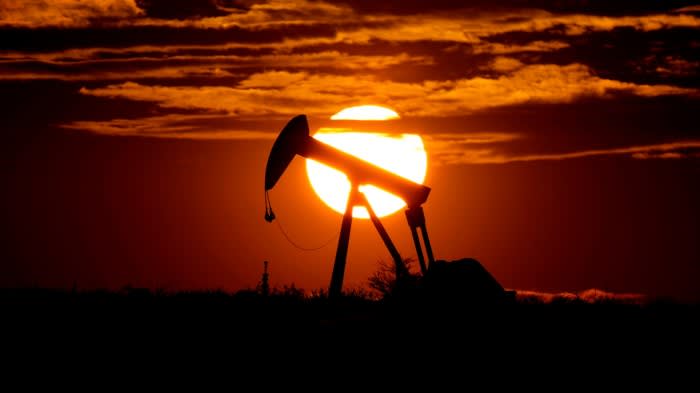
Stay informed with free updates
Simply sign up to the Oil & Gas industry myFT Digest — delivered directly to your inbox.
The west’s energy watchdog has said the world could generate a “substantial surplus” of oil this year as faltering economic growth hits demand and non-Opec countries step up production to record levels.
The International Energy Agency said on Thursday that a surge in output by countries such as the US may offset the impact of cuts by Opec+, the oil exporters’ cartel, which is seeking to shore up prices.
The IEA’s monthly report added that, while the recent cuts agreed by the cartel “may tip the oil market into a small deficit at the start of the year, strong growth from non-Opec producers could lead to a substantial surplus”.
It said this outcome was likely to occur if additional voluntary cuts in Opec+ countries were phased out in the second quarter of this year.
The cartel’s efforts to support prices above $80 a barrel have been hindered by internal divisions and production by other countries.
Opec+, which includes Opec members plus countries including Russia and Kazakhstan, has announced several rounds of reductions since October 2022.
But the most recent cuts by countries such as Saudi Arabia and Russia have been additional voluntary reductions whose future is less certain.
The IEA predicted demand would grow this year only by about half the pace of 2023 — by an average of about 1.2mn b/d this year, rather than 2.3mn b/d last year.
It attributed this to slowing growth in the world’s major economies, with the impact fading of the end of Chinese Covid-19 restrictions, as well as increases in EV sales.
However, Thursday’s report marked a slight upward revision in the IEA’s growth forecast from last month, when it predicted demand would increase by 1.1mn b/d.
The IEA, which is primarily funded by the OECD, acknowledged the risk of disruption to oil supply from “rising geopolitical tensions” in the Middle East remained elevated. But it said it was ready to respond “decisively” if needed with members holding combined stocks of 4bn barrels.
Despite continuing uncertainty over the Red Sea, one of the world’s key oil routes, prices were broadly steady on Thursday, with benchmark Brent crude up 0.5 per cent on the day at $78.31 a barrel.
The IEA added that record output from the US, Brazil, Guyana and Canada will help boost global supply this year by 1.5mn b/d to a record 103.5mn b/d.
Such increases would force Opec+ to decide whether to implement more cuts at the risk of losing further market share as supply outstrips demand.
The IEA report contrasts with Opec’s analysis, which predicts that oil demand will continue to grow steadily, by about 2.3mn b/d this year, before falling to a still “robust” 1.8mn b/d in 2025.
The two organisations have been at loggerheads over the future of fossil fuels as governments seek to shift to renewable energy.
IEA executive director Fatih Birol has argued that the organisation’s analysis shows that oil demand will peak this decade. But Haitham al-Ghais, Opec secretary-general, has rejected such suggestions and called for more investment in the industry.
“Today, what is clear is that peak oil demand is not showing up in any reliable and robust short- and medium-term forecasts,” Ghais said this week.
He added that it was a “challenge to see peak oil demand by the end of the decade, a mere six years away”.
